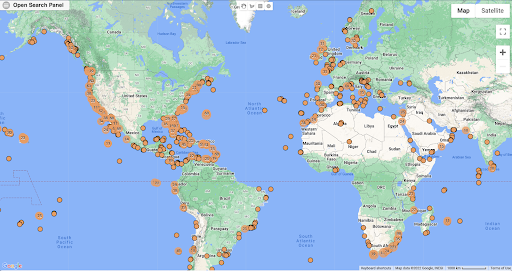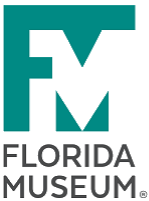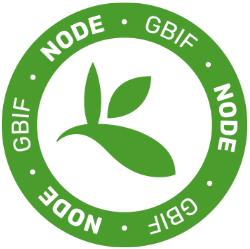With over 400 users, the Macroalgae Portal (macroalgae.org) has served as the central repository for the Macroalgal Herbarium Consortium since 2013. As one of the original Thematic Collections Networks (TCNs) funded by the US National Science Foundation (NSF Award #1304924 and others), the consortium set out to catalyze phycological research by digitizing major macroalgal collections in the United States. Key leaders in the portal’s inception included the University of New Hampshire (led by PI, Dr. Christopher Neefus) and collaborators from University of California, University of Michigan, University of North Carolina, University of Washington, and the New York Botanical Garden. Nearly ten years, 50+ collections, 290k views, 862k records later, the TCN’s legacy lives on through its contributions to the portal and phycological research.
While funding for this TCN ended in 2019, the Macroalgae Portal continues to play a critical role in expanding the known distribution of various algal species in time and space. Publications citing data from the portal have ranged from short descriptive works to broader, more synthetic ecological analyses disseminated in high impact journals. A selection of recent publications that cite specimens from the portal include:
• Bringloe et al. (2022, Global Change Biology) and Bringloe, Verbruggen, & Saunders (2020, PNAS) used occurrences of Laminaria solidungula and Odonthalia dentata from the portal in their assessment of Arctic marine forests in the context of global climate change (view the dataset on macroalgae.org).
• Schneider, Peterson, & Saunders (2020, Phycologia) assessed historic collections of Solieriaceae from Bermuda documented in the portal to enhance the the description of a new species of red algae, Tepoztequiella muriamans (see paratype MICH 641029, UM Herbarium Data Group, IPT Admin L, 2022).
• Assis et al. (2020a, Scientific Data) compiled and normalized over 2 million occurrence records of brown algae and seagrasses, including a large number of records from the Macroalgae Portal (see Assis et al., 2020b for the complete dataset).
• O’Brien, Neefus, & Dijkstra (2019, 2022) used the maximum entropy (“MaxEnt”) method to model the potential spread of invasive algal species using historical occurrence records from the portal.
• Karol & Sleith (2017, Journal of Phycology) located the oldest vouchered observation of Nitellopsis obtusa, an invasive green alga collected from the St. Lawrence Seaway near Montréal that is now widespread in the Great Lakes region (see NY 02318193, Ramirez et al., 2022).
• Melton, García-Soto, & López-Bautista (2016, Algas) extended the distribution of the tropical-subtropical species of green algae to the Caribbean with a new record of Ulva ohnoi, now vouchered in the University of Alabama’s herbarium (see UNA00072658).
Financial support for the Macroalgae Portal concluded with the TCN. Yet, the portal lives on, and in April 2022, it was transferred to servers at Arizona State University for co-administration between the University of New Hampshire and iDigBio’s Symbiota Support Hub. This transfer enables the Support Hub to better assist the portal community with technical requests and increases their capacity to contribute to future portal developments.
Because the Macroalgae Portal’s research and teaching potential will only increase as collections are added and existing records are refined, the Symbiota Support Hub has chosen to work with this community during an upcoming Portal Advancement Campaign. This month-long webinar series is designed to increase the accessibility of the portal’s collections by refreshing existing datasets, adding new collections, and empowering the community to sustain its digitization activities. If you manage an algal collection, please consider participating in the campaign this August. Likewise, if you are aware of collections that have yet to join the portal, but could be added–regardless of their digitization status–please let us know. The Support Hub is eager to engage with the macroalgae community through the portal campaign and beyond.
Visit the Macroalgae Portal: https://macroalgae.org/portal/
Learn more about Symbiota Portal Campaigns: https://symbiota.org/portal-advancement-campaigns/

If you’re not already familiar with the Macroalgae Portal, consider creating an account to explore and interact with the portal’s extensive occurrence data and imagery. Users can browse, download, and comment on specimen occurrences, as well as create taxon-based checklists and occurrence-based datasets.

Portal administrators hope to implement upgrades to the portal’s mapping features (shown above) to enhance in-portal visualization of species distributions in time and space.
Works Cited
- Assis, J., Fragkopoulou, E., Frade, D., Neiva, J., Oliveira, A., Abecasis, D., Faugeron, S., & Serrão, E. A. (2020a). A fine-tuned global distribution dataset of marine forests. Scientific Data, 7(1), 119. https://doi.org/10.1038/s41597-020-0459-x
- Assis, J., Fragkopoulou, E., Frade, D., Neiva, J., Oliveira, A., Abecasis, D., Faugeron, S., & A. Serrão, E. (2020b). A fine-tuned global distribution dataset of marine forests (Version1). figshare. https://doi.org/10.6084/m9.figshare.7854767.v1
- Bringloe, T. T., Wilkinson, D. P., Goldsmit, J., Savoie, A. M., Filbee-Dexter, K., Macgregor, K. A., Howland, K. L., McKindsey, C. W., & Verbruggen, H. (2022). Arctic marine forest distribution models showcase potentially severe habitat losses for cryophilic species under climate change. Global Change Biology, 28(11), 3711–3727. https://doi.org/10.1111/gcb.16142
- Bringloe, T. T., Verbruggen, H., & Saunders, G. W. (2020). Unique biodiversity in Arctic marine forests is shaped by diverse recolonization pathways and far northern glacial refugia. Proceedings of the National Academy of Sciences, 117(36), 22590–22596. https://doi.org/10.1073/pnas.2002753117
- Karol, K. G., & Sleith, R. S. (2017). Discovery of the oldest record of Nitellopsis obtusa (Charophyceae, Charophyta) in North America. Journal of Phycology, 53(5), 1106–1108. https://doi.org/10.1111/jpy.12557
- Melton, J. T., García-Soto, G. C., & López-Bautista, J. M. (2016). A new record of the bloom-forming green algal species Ulva ohnoi (Ulvales, Chlorophyta) in the Caribbean Sea. Algas, 51, 62–64. http://www.sefalgas.org/images/pdf/boletines/ALGAS51.pdf
- O’Brien, B., Neefus, C., & Dijkstra, J. (2019). Global domination: Understanding the spread of two invasive seaweeds using habitat suitability models. iDigBio’s 3rd Annual Digital Data Conference, New Haven. https://www.idigbio.org/wiki/images/d/d3/IB_OBrien.pdf
- O’Brien, B., Neefus, C., & Dijkstra, J. (2022). Biogeography and invasion potential of five invasive seaweeds under projected ocean warming. 50th Annual Benthic Ecology Meeting, Portsmouth.
- Ramirez J, Watson K, McMillin L, Gjieli E (2022). The New York Botanical Garden Herbarium (NY). Version 1.47. The New York Botanical Garden. Occurrence dataset https://doi.org/10.15468/6e8nje accessed via GBIF.org on 2022-06-21. https://www.gbif.org/occurrence/1930526116
- Schneider, C. W., Peterson, E. S., & Saunders, G. W. (2020). Two new species of Solieriaceae (Rhodophyta, Gigartinales) from the euphotic and mesophotic zones off Bermuda, Meristotheca odontoloma and Tepoztequiella muriamans. Phycologia, 59(2), 177–185. https://doi.org/10.1080/00318884.2020.1719326
- UM Herbarium Data Group, IPT Admin L (2022). University of Michigan Herbarium. Version 1.41. University of Michigan Herbarium. Occurrence dataset https://doi.org/10.15468/nl8bvi accessed via GBIF.org on 2022-06-21. https://www.gbif.org/occurrence/1988631087







